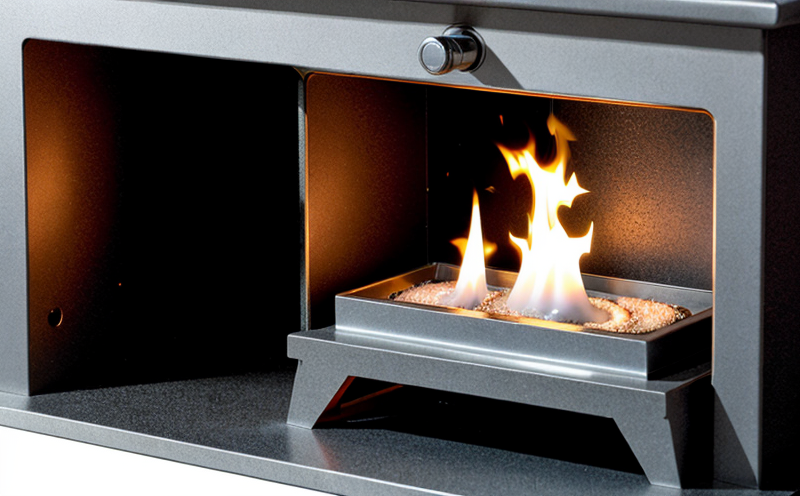Ignitability Testing under Small Flame Exposure
The ignitability testing under small flame exposure is a crucial aspect of fire safety compliance and product development, particularly for materials used in textiles, furniture, and building products. This type of testing assesses the likelihood that a material will ignite when exposed to a small, external source of heat or flame.
Understanding this concept is essential for manufacturers who are developing new materials or products aimed at enhancing fire safety performance. Compliance with international standards such as ISO 13946:2015 and ASTM E84-18 ensures that the tested material meets stringent criteria, thereby reducing potential risks in end-use applications.
The testing process involves exposing a small sample of the material to a controlled flame for a specified duration. The primary goal is to observe how quickly the material ignites and measures the rate at which it spreads if ignited. This information helps engineers fine-tune formulations or designs to improve fire resistance without compromising other properties like strength, flexibility, or appearance.
For materials that are likely to come into contact with open flames (e.g., curtains, upholstery), this test is especially important because it provides insights into the likelihood of rapid spread once ignited. By understanding these characteristics early in the design stage, manufacturers can make informed decisions about material selection and formulation adjustments before full-scale production.
Moreover, ignitability testing under small flame exposure also plays a vital role in R&D efforts focused on creating innovative fire retardants or other additives aimed at improving material performance. Through rigorous experimentation, researchers can identify effective combinations that balance enhanced fire resistance with minimal impact on desired physical attributes.
Scope and Methodology
Scope:
| Aspect | Description |
|---|---|
| Sample Preparation | The sample must be cut to standard dimensions and dried if necessary. The orientation of the sample relative to the flame source is critical. |
| Flame Source | A small, controlled flame (typically 30 mm diameter) is applied for a fixed duration. |
| Data Collection | Measurements include time-to-ignition, flame spread rate, and char formation. |
The methodology adheres closely to established international standards such as ISO 13946:2015, which provides detailed guidelines on sample preparation, equipment specifications, operating procedures, and data interpretation.
Eurolab Advantages
Eurolab stands out in the field of fire safety testing with its comprehensive suite of services tailored to meet diverse industry needs. Our advanced laboratories and experienced technical staff ensure accurate, reliable results that are critical for product development and compliance.
- State-of-the-Art Facilities: Equipped with cutting-edge instrumentation capable of simulating real-world conditions accurately.
- Certified Technicians: Our team comprises experts trained in the latest techniques and standards.
- Comprehensive Reporting: We provide detailed reports that include not only numerical data but also visual aids like photographs and diagrams.
- Quick Turnaround Times: Efficient processes allow us to deliver results rapidly, which is essential for timely product launches.
By leveraging these advantages, Eurolab helps clients navigate the complexities of fire safety testing confidently. Our commitment to excellence ensures that every test conducted meets or exceeds international standards.
Competitive Advantage and Market Impact
- Innovation Leadership: By staying ahead of regulatory changes, Eurolab ensures clients remain compliant with the latest standards.
- Cost Savings: Early identification of issues through thorough testing reduces costly rework during later stages of development.
- Enhanced Reputation: Demonstrating stringent quality control measures can significantly enhance a brand’s reputation among consumers and stakeholders.
- Global Reach: Our expertise in fire safety testing is recognized worldwide, enabling clients to meet international market demands seamlessly.
Eurolab's proficiency not only supports individual product development but also contributes positively to broader industry trends towards increased emphasis on sustainability and safety.





